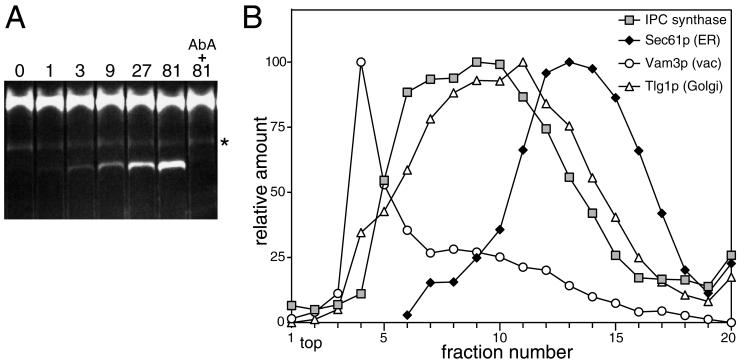Figure 4.
Modification of C6-NBD-ceramide by Aur1p. (A) TLC separation of the reaction products produced when C6-NBD-ceramide was incubated with gradient fractions containing Golgi membranes, as described in MATERIALS AND METHODS. The samples were diluted threefold serially from the most active membrane fractions in the gradient shown in Figure 5 (81; 25 μg/ml membranes), and the Aur1p inhibitor AbA was added to a sample containing the highest concentration of membranes (10 μg/ml AbA). The upper band corresponds to unmodified C6-NBD-ceramide, and the faint AbA-insensitive band (*) comigrates with C6-NBD fatty acid and is apparently released from C6-NBD-ceramide during the acid extraction of lipids before TLC. (B) IPC synthase activity cofractionates with Golgi and not ER membranes. Fractions from a velocity gradient separation of membranes from SEY6210 were assayed for the indicated proteins by quantitative immunoblotting with the use of 125I-protein A (Amersham, Arlington Heights, IL) and a PhosphorImager (Molecular Dynamics, Sunnyvale, CA). Fractions were also incubated with C6-NBD-ceramide, the products were separated by TLC, and the modified band was quantified with the use of a fluorescence imager. The IPC synthase activity is the mean of results from four gradients, and the peak is slightly broadened as a result.

